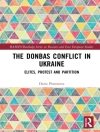Propaganda and Persuasion, Eighth Edition offers a comprehensive history of propaganda and introduces the tools and concepts used to analyze it. New author Nancy Snow ushers in fresh perspectives, experience, and insight as one of the foremost scholars in propaganda studies to further augment the ideas, concepts, and analytical framework introduced by original authors Garth Jowett and Victoria O’Donnell. Ideal for courses in Persuasion, Propaganda, or Political Communication, this book draws on examples from ancient times to present-day issues, such as the impact of social media, to help students recognize, understand, and analyze the instances of propaganda and persuasion they encounter in an increasingly complex and digitalized world.
Köp den här e-boken och få 1 till GRATIS!
Språk Engelska ● Formatera EPUB ● Sidor 512 ● ISBN 9781071854310 ● Utgivare SAGE Publications ● Publicerad 2024 ● Nedladdningsbara 3 gånger ● Valuta EUR ● ID 9570566 ● Kopieringsskydd Adobe DRM
Kräver en DRM-kapabel e-läsare












